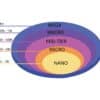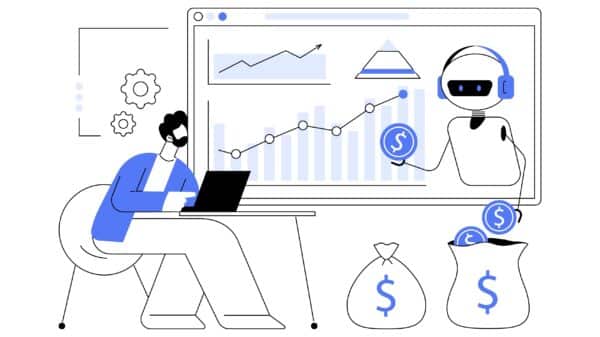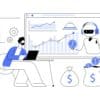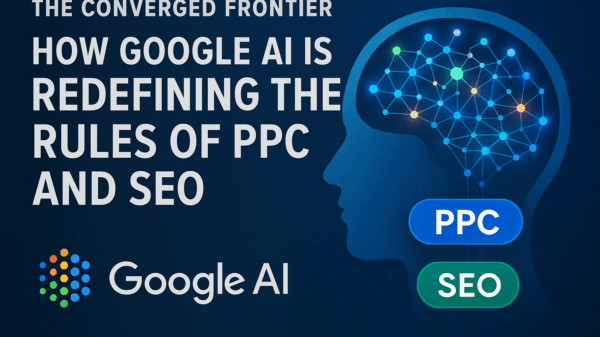Your Google shopping feed is basically conversion data in 2024. Not filling out all the possible attributes in your shopping feed is leaving money on the table. Worse, it’s making you less profitable than you could be.
If you run paid advertising, it is a Google shopping feed world out there and we are all just living in it. Even the paid social platforms like Meta, Pinterest, and TikTok built their feed catalogs from Google’s shopping feed specifications.
If Google’s shopping feed is so important, how do you make yourself stand out? We are going to tell you some of the feed attributes that can help you dominate Google shopping ads carousel and how to take the number 1 spot. I want to make sure you own your category and never overpay for a click again.
Let’s take a look at a classic example where you have the basic shopping feed attributes filled out:
– SKU ID
– Product Title
– Product Description
– Link
– Image Link
– Available
– Price
– Brand
– GTIN (UPC, EAN, ISBN, etc.)
– Condition
– Google Product Category (GPC)
Having all these filled out so you can run Google shopping ads is great. Even if not required, at a minimum you want to also fill out the Product Type attribute. The ability to use Product Type to organize and report on your shopping campaign performance is vital to your success today. You can pair Product Type with Custom Labels as we often joke that Product Type is the 6th unofficial Custom Label.
If you don’t want to learn how to take your shopping feed to the next level, the rest of this article is not for you. Not filling out the optional feed attributes is leaving it to Google to figure out those attributes for each SKU based on the rest of your feed and whatever is on your product images.
Just like in an ad account, sometimes what seems like a small change can have the biggest impact on your performance. Fill out your shopping feed or leave it up to Google? Additionally, the best way to scale shopping campaigns is going after every search possible.
The following are some of my favorite shopping feed attributes and how we use them with different ecom products. When we build a custom shopping feed for clients, we find we can scale campaigns and dominate SERP. Take all advice with a grain of salt online. We have, however, shopping ads running in 50+ countries and work with 12+ brands at any given time. That means my ideas are battle-tested for showing up in the ad auction.
So which are my favorite optional Google shopping feed attributes? Let’s talk about that right now.
1. Age Group
Whether you’re selling a product that would appeal to a wide age range, or you sell different products that target different age groups, it never hurts to use the age group attribute. When you pair this attribute with gender, you can feed Google even more data to serve your SKUs against the right searches.
Product Use Cases: Books, Clothing, Shoes, Jewelry, Glasses, and Sports. Anytime a SKU has an age target, use this feed attribute.
Required: All apparel products that are targeted to people in Brazil, France, Germany, Japan, United Kingdom, and the United States. Plus all products with assigned age groups. Otherwise, all other products and target countries are optional but we like to use this whenever we can.
Supported Values: These are the supported values for this attribute:
- Newborn [newborn] 0-3 months old. Newborn sizes are often identified by the age range in months (0–3) or just “newborn.”
- Infant [infant] 3–12 months old. Infant sizes are often identified by the age range in months (3–12).
- Toddler [toddler] 1–5 years old. Toddler sizes are often identified by the age range in months (12–24) or years (1–5).
- Kids [kids] 5–13 years old. Children’s sizes are often identified by the age range in years (5-13).
- Adult [adult] Typically teens or older (13 years old or more). All sizes within this age group have been manufactured to fit an adult or teen.
2. Gender
If you sell something that slants towards one gender over another, or you sell something that is unisex, you should fill out the gender attribute.
Unisex may not seem like a big deal to add to your Google shopping feed, but it can be very valuable. When I lived in London, our agency took over Jack Wills and ASOS accounts and began targeting unisex terms. These unisex keywords were less competitive and converted at a higher rate than people would think. People search in unexpected ways. Sometimes you need your shopping experience and feed to match those searches.
Product Use Cases: Clothing, Shoes, Jewelry, Glasses, and Sports.
Required: All apparel items that are targeted to people in Brazil, France, Germany, Japan, United Kingdom, and the United States. Plus any and all gender-specific products.
Supported Values: These are the supported values for this attribute:
- Male [male]
- Female [female]
- Unisex [unisex]
3. Colour
What color is that product? Does your brand use its own internal name for colors? It is not yellow, it is sunburst! For example, Google recommends that if you use “Toasted Walnut” on your landing page, then submit that value in your product data. Don’t submit “Brown.”
I recommend you put brown in this attribute because it gets used for filters in SERP. I would rather put Toasted Walnut in our product title and in our product description instead. How many people would search for brown vs toasted walnut?
Product Use Cases: Books, Clothing, Shoes, Jewelry, Glasses, Sports, Phone Case, Vehicles, and Home Goods (furniture, pens, rugs, etc.)
Required: All apparel products that are targeted to Brazil, France, Germany, Japan, United Kingdom, and the United States. Plus all products available in different colors. If your product has different colors, use this attribute.
Supported Values: See the opening paragraph for this one.
4. Material
When someone does a search for certain products, they often specify the material it’s made from. Include this attribute and you are more likely to show up. If your pens are made out of spaceship material, you can put that down in this feed attribute.
Product Use Cases: Clothing, Shoes, Jewelry, Glasses, Sports, Phone Case, Home Goods (furniture, pens, rugs, etc.)
Required: Only use when your product is relevant for distinguishing different products in a set of variants.
Supported Values: Free form text but limited to 200 characters. Some good examples of what you could use are: Suede, Patent Leather, Cotton, Polyester, Elastane, 100% Rayon, or White Gold Silver for what you are selling.
5. Pattern
Your product’s pattern or graphic print can help you rank when people search by, for example, stripes or tartan. If you sell anything patterned, then adding that into your Google shopping feed can only help you rank for those niche searches.
Product Use Cases: Clothing, Shoes, Jewelry, Glasses, Sports, Home Goods (furniture, pens, rugs, etc.), and Bathroom Accessories.
Required: Similar to Material Attribute. If relevant for distinguishing different products in a set of variants.
Supported Values: Free form text but limited to 100 characters. Some good examples of what you could use are Striped, Polka Dot, Paisley, Herringbone, Floral, Bears, Tigers, Dotted for what you are selling.
6. Product Highlight
You can use this feed attribute to highlight your products that would allow Google and your customers to quickly scan the most important features of that SKU. Try to list at least two highlights and don’t go overboard… even if the maximum is 100 product highlights. Make sure you talk about the product, but don’t try to keyword stuff or list search terms.
Product Use Cases: Clothing, Sports, Shoes, Jewelry, Glasses, Home Goods (furniture, pens, etc.), Bathroom Accessories.
Required: You can use it for any relevant SKUs.
Supported Values: Free form text but is limited to 150 characters.
7. Product Detail
If your product has technical specifications or additional details of your product that are not already listed in your Google shopping feed or in Product Highlight, this attribute is for you.
Product Use Cases: Sports, Home Goods (pens, water bottle, etc.), Sports, and Bathroom Accessories.
Required: You can use it for any relevant SKUs.
Supported Values: Free form text with no character limit.
8. Lifestyle Image
This attribute is used less than others but is a great way to show off your product in situ, by including a lifestyle image. Or as Google would put it “show your product in a natural and authentic setting.”
Product Use Cases: Any SKU you can show off in a lifestyle setting. The only limitation is your imagination.
Required: This is optional and there are no restrictions beyond making sure you use the right URL to point to your product image. Plus your URL cannot be more than 2,000 characters.
Supported Values: Follow Google’s guidelines to make sure your image URL is formatted so Google can understand it.
- Use a URL that points to an image in a supported file format.
- Start with http or https and comply with RFC 3986. For example: http://www.example.com/image1.jpg.
- Replace any symbols or spaces with URL-encoded entities. For example, if your URL contains an ampersand (&), then replace it with %26. If your URL contains a comma (,), then replace it with %2C.
- Make sure Google can crawl your URL. For example, ensure your robots.txt file is configured












